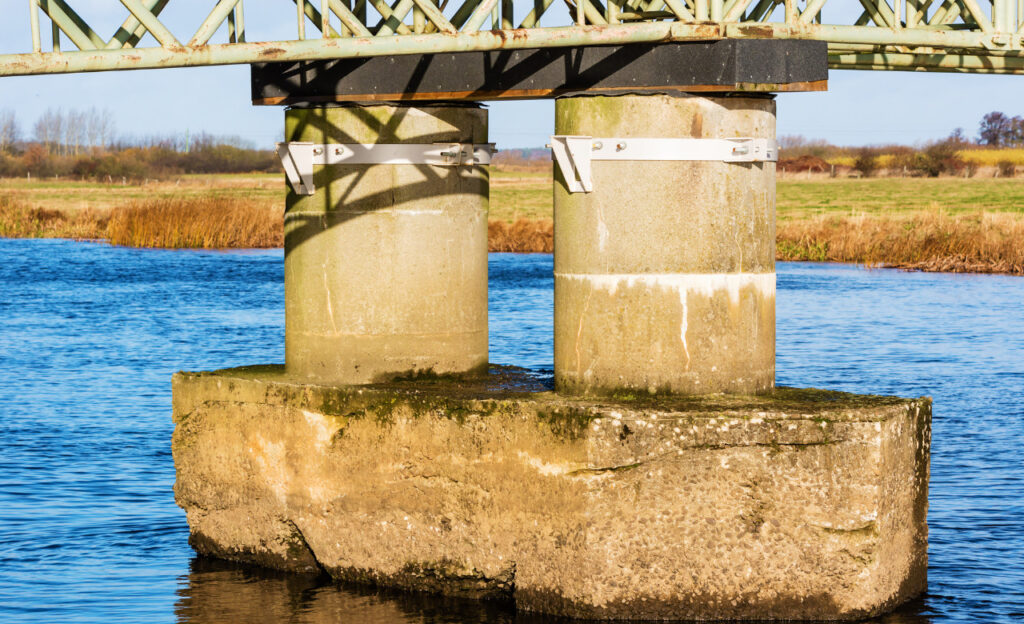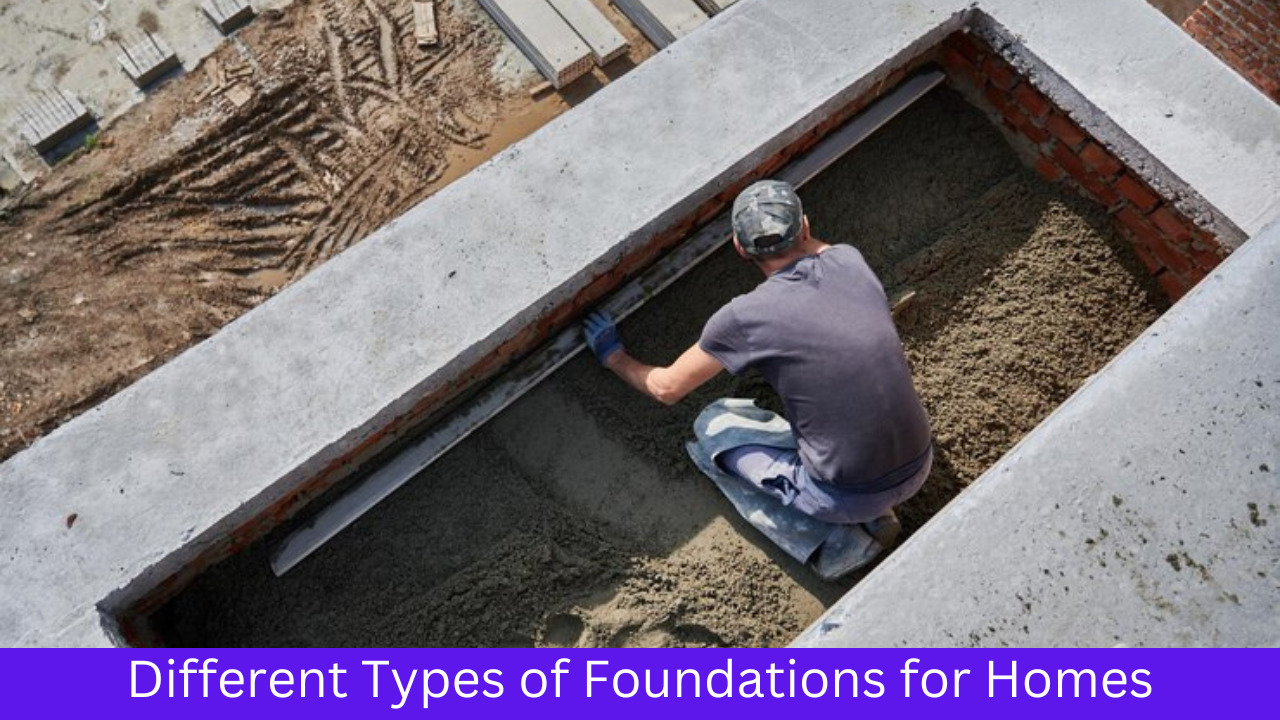Whether you are going to build residential or commercial buildings, the building foundation is more important than you think. You need to pay attention to every detail. There are many types of foundations, ranging from shallow to deep. However, choosing the one for your building among different foundation types can be super confusing.
Just like foundations for residential buildings and commercial ones, there are specialized foundation types for structures. A bridge foundation is one such type. This type of foundation is responsible for holding the weight of a bridge and is responsible for load distribution into the ground. Based on different types of bridges, these foundations can also be of different types.
Let’s dive deeper into the details and talk about bridge foundations, their construction, and their types.
Table of Contents
What is the Bridge Foundation?
A bridge foundation is one of the foundation types that is the base of a bridge structure that has to bear the load of bridge and bridge traffic. This is the part of the bridge built under the pier or abutment that transmits the whole load to the soil below without causing damage to the soil or superstructure. Bridge foundations are a critical structural element for bridges that are responsible for maintaining the structural stability of bridges.
Importance of Bridge Foundations
Before we talk about the construction and types of bridge foundations, let’s understand the importance of bridge foundations.
- Bridge foundations bear the load of the bridge structure and traffic passing through it.
- The type of bridge foundation you choose affects the structural stability and integrity of the bridge structure.
- Bridge foundations prevent the scouring effect of flowing rivers.
- A proper bridge foundation helps to effectively distribute the weight of the bridge structure to keep it within the weight-bearing capacity of the soil.
- The bridge foundation serves as a base for the construction of the abutment and pier.
Now you must be clear about what is bridge foundation and why it is considered an important structural element.
Types of Bridge Foundations
Some of the common types of bridge foundations are:
Shallow Bridge Foundations
Shallow bridge foundations are the ones that are not rooted very deep into ground level and transfer the weight of bridges near soil. This type of bridge foundation is preferred for soil types having large weight-bearing capacities. Some of the common examples of shallow bridge foundations are:
Spread Footing Foundation
Spread footing foundations, also known as open foundations, are the most commonly used foundations in bridge construction. Concrete is the material used for the construction of spread footings.
These foundations consist of a stem and footing. A stem is a vertical section holding the bridge that transfers the load of the bridge. While footings refers to the large base that lies a few feet beneath the surface and transmits the load to a larger area.
Construction of Spread Footings Foundation
To construct this type of bridge foundation, short and open-pit excavations are required. Open-pit excavations are preferred for places where soil is stable enough and is not surrounded by water. However, short excavations are required for the places where the soil is not stable so a 4-feet excavation is required.
Benefits of Spread Footing Foundation
Some of the benefits of having this type of bridge foundation are:
- Inexpensive
- Easy to built
- Requires less time
- Available for customization in different shapes.
However, these are only suitable for specific soil types and can be difficult to settle.
Raft Foundation
Another type of shallow bridge foundation is the raft foundation. This type of shallow foundation is preferable for places where the waterbed contains silt and soft clay while hard soil is unavailable up to a certain depth. The weight-bearing capacity of soil is also less at these locations. A raft foundation is a thick slab that rests on the soil surface and supports columns from beneath bearing the weight of the bridge.
Benefits of the Raft Foundation
Some of the benefits of having this type of bridge foundation are:
- No deep excavation required
- Preferable for soil with low weight-bearing capacity.
- Easy to built
- Overcome the problem of differential settlement.
Grillage Foundation
Another type of shallow bridge foundation is the grillage foundation. This type of bridge foundation is preferable for places where subsoil conditions are not good. Grillage foundation usually consists of one, two, or more tiers of beam placed on a layer of concrete to distribute the weight of bridge components.
Deep Bridge Foundations
In contrast with shallow foundations, deep foundations are extended much deeper into the soil. These foundation types are extended to bedrock or hard soil. Deep bridge foundations use friction along their depth to support the load. Deep bridge foundations have the following subtypes:
Pile Bridge Foundation
This type of bridge foundation is available at places where hard strata are unable till a reasonable depth and soil is super soft. These piles are made up of concrete, steel, or timber and are extended up to hundreds of feet deeper into the ground.
This foundation type depends on the side friction to bear the load of the bridge structure. For the construction of the pile bridge foundation, heavy machinery is used to drill to the required depth. Pile bridge foundations can be used in a variety of bridges and are suitable for different ground conditions.

Well Foundation
Another type of deep bridge foundation is the well foundation. Well, the foundation is suitable for places where hard soil is present 2-4 meters beneath the water level. Also, the soil in the region is sandy.
Drilled Shafts/ Caisson Foundation
Another type of deep foundation is the drilled shafts. This is preferable for the places where river bed and hard strata are present too far to bear the load of the bridge. For the construction of such bridge foundations, a large hole is dug into the ground and then filled with concrete.
As compared to the pile’s foundation, this foundation type can bear more load due to its larger diameter. You can build drilled foundations as deep as you want. However, these foundations are expensive and require careful construction.
Choose Best Bridge Foundations
Just like residential foundations, bridge foundations are of many types. All of these bridge foundation types have their pros and cons. While some of them are suitable for sandy soil, others are ideal for clay soil environments. Moreover, the construction of each of these bridge foundation types follows different protocols. So, make sure you keep all the factors in mind while choosing the best kind of bridge foundation.





